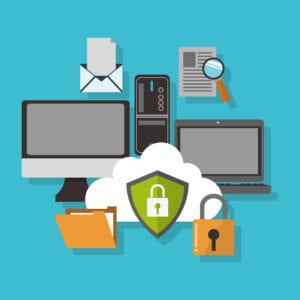Traditional office environments have been forced to adjust and make way for remote employees that don’t have to be on location to perform their duties. Work-from-home has become part of the business lexicon for better or for worse. Companies must broach this subject because of employee demand and cost cutting initiatives. A key component of this concept is how to service remote workers, specifically from your IT department’s position. A hardline approach leaning towards tradition is an option, but a more informed analysis of your business and employees allows you to develop a plan that can incorporate these modern employees without sacrificing efficiency, customer satisfaction, and overall company growth.
Security – A prime directive for IT professionals is making sure the company’s data is secure. The easy way out is to keep everything in house under lock and key. With the advent of cloud computing, virtual servers, and the workforce demand for more flexibility, this closed approach is difficult, if not impossible without opening some holes. But, it is possible to make resources available while keeping them reasonably secure. Using web-based tools and permission-based access will help you maintain control and allow for the flexibility employees need. Data should be defined based on sensitivity to the company as well as your customers. These definitions can provide a baseline on who has access and from where. A clear framework will provide the necessary components to incorporate remote users without compromising customers or compliance.
Provisions – Many employees are given all the hardware and software they need to perform their duties. But, some tech-savvy remote employees want to use their own devices. BYOD (bring your own device) and support requests from remote users can create challenges for any IT network. From endless phone calls, ISP failures, and unfamiliar devices – these can all bottleneck support for your employees. Even still, BYOD is not out of the question. The feasibility just needs to be considered on a case-by-case basis.
Software can be treated the same. Proprietary programs don’t need to interrupt flexibility and remote use. A remote connection with VPN can be a simple solution to allow remote users to access what they need (see security concerns above). Using email and opening common document types shouldn’t cause problems considering the ubiquity of PDFs, and Microsoft Office. A simple list of suggested software for various platforms and quick setup of an email client will go a long way to keep remote users happy.
Having a well devised IT game plan for your remote employees can allow for a more progressive approach to your business without compromising security or budget. Efficiency and culture are bound to improve with streamlined support for your remote workers. Customer satisfaction and business growth are added benefits as well.



